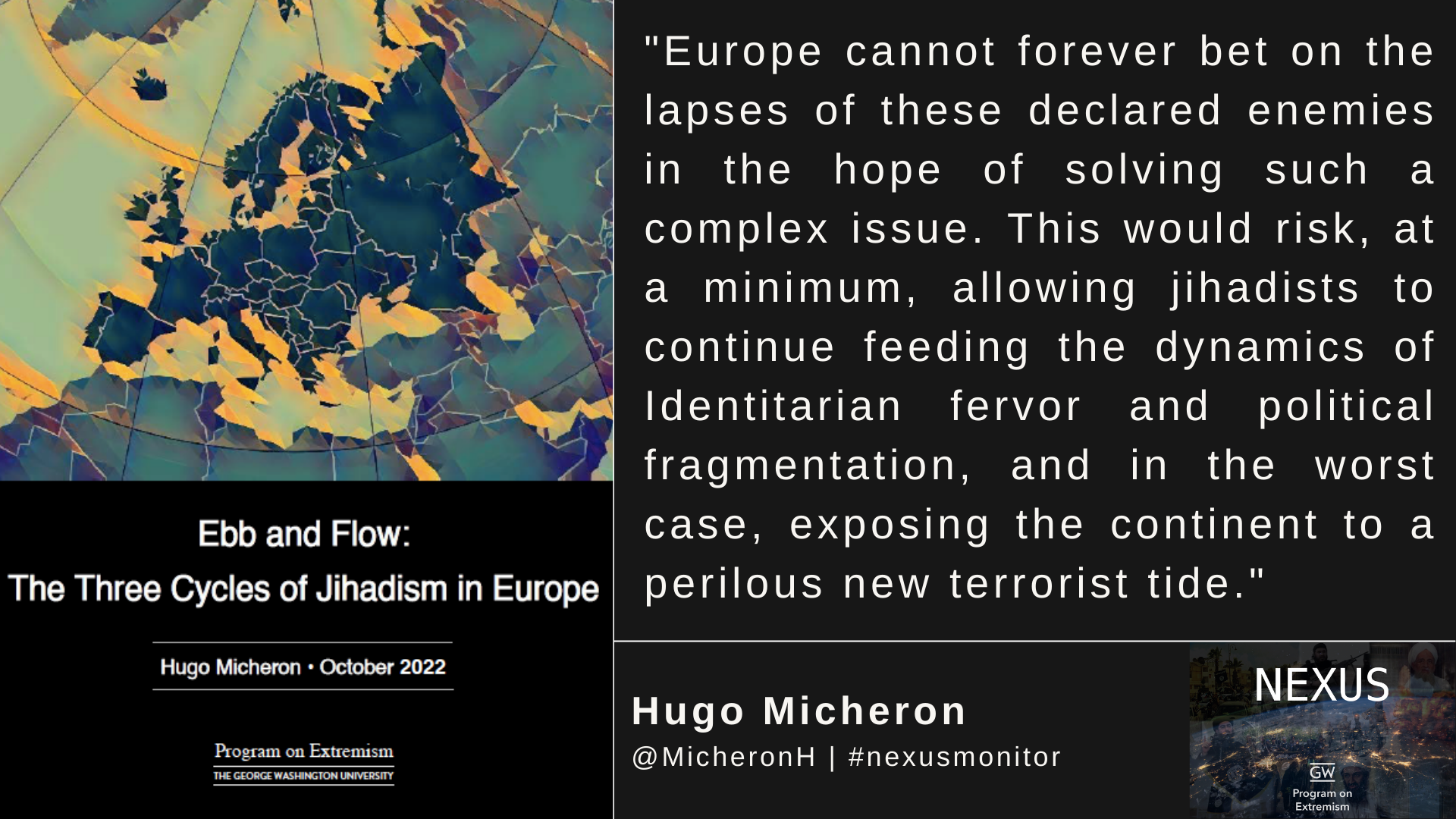Summary
The trial of the November 2015 Attacks in Paris that ended in June 2022 in part symbolizes the end of an important phase of jihadism in Europe. But jihadism continues to pose an intellectual and political challenge to European societies. The need to understand it is urgent, but the task is made difficult for two reasons.
First, Islamist militancy has penetrated the Western European media space in the last few years, and now provides the backdrop for a muddled public debate on immigration, the place of religion, and terrorist violence. Since the 9/11 attacks on the United States, nearly 150 Islamist attacks have assailed Europe causing 800 deaths and nearly 5,000 injuries. Hundreds of other attempts have been thwarted from Brest to Vienna, from Glasgow to Milan, from Barcelona to Oslo, and even in Geneva. The sheer proliferation of these violent acts often gets in the way of making sense of the broader phenomenon.
Second, Islamism tends to produce anabolic effects within the societies it affects. These are fixed around two postures in the debates on terrorism and its causes: extreme relativization, or excessive hysterization. These two postures often trap public reflection in slogans and lead to paralysis.
However, jihadism is more than just the attacks, and it is certainly not confined to the macabre death tally to which it is too often reduced. Rather, it has lasting political effects that profoundly and negatively corrode the ties that bind European democracies. Jihadist attacks represent a delayed symptom of individuals in our midst who adhere to this ideology and resort to its violent methods. For these individuals, attacks are a means, not an end, and are but one path among others at the disposal of jihadist followers for terrorizing their enemies. Nonetheless, it is this violent path that represents the ultimate manifestation of the jihadist movement's existence in the heart of European societies. To focus only on the attacks and their mournful toll, to make them the yardstick by which to calibrate militancy, is comparable to watching the last few minutes of a film to gauge its quality. As a result, what goes under-analyzed and under-represented in the public discourse is a jihadism that prevails between terrorist attacks.
Second, jihadism is a religious and political ideology that is not confined to the organizations that claim to be jihadist, such as al-Qaeda, the Islamic State or their global network of affiliates. These organizations populate a religious-political field that includes other Islamist movements with which, depending on the circumstances and the issues at stake, they may fight or collude. The destruction of a jihadist group does not, therefore, automatically mean that the ideology from which it drew its strength is dead, nor does it put an end to the utopian project of building an “Islamic” state and imposing visions of Islamic law that may have galvanized followers around the world. The ideas that sparked the movement can continue to proliferate as long as the conditions for their dissemination are still in place and their supporters still have the capacity to act. The destruction of the so-called “Caliphate”—the territorial entity between Syria and Iraq controlled by ISIS—in 2019 and the death of the "caliph" Abu Bakr al-Baghdadi in the same year did not ipso facto put to rest the issue of European jihadism, because in many respects the phenomenon is built from within and is structural.
Building on these preliminary remarks, this paper will explore why the French case is not unique before analyzing the mechanics of jihadism in Europe over the past thirty years during three major cycles of its development. Afterwards, it will examine the potential evolution of this phenomenon and ways in which it might collectively be dealt with.


